By Rick VanSickle
The trunks on these weathered vines are downright gnarly, twisted into macabre shapes and scarred from decades of yielding some of the finest Chardonnay grapes in the history of the modern wine industry in Niagara.
Also see: The Great Chardo Swap, featuring Chardonnay from Montague Vineyard, here.
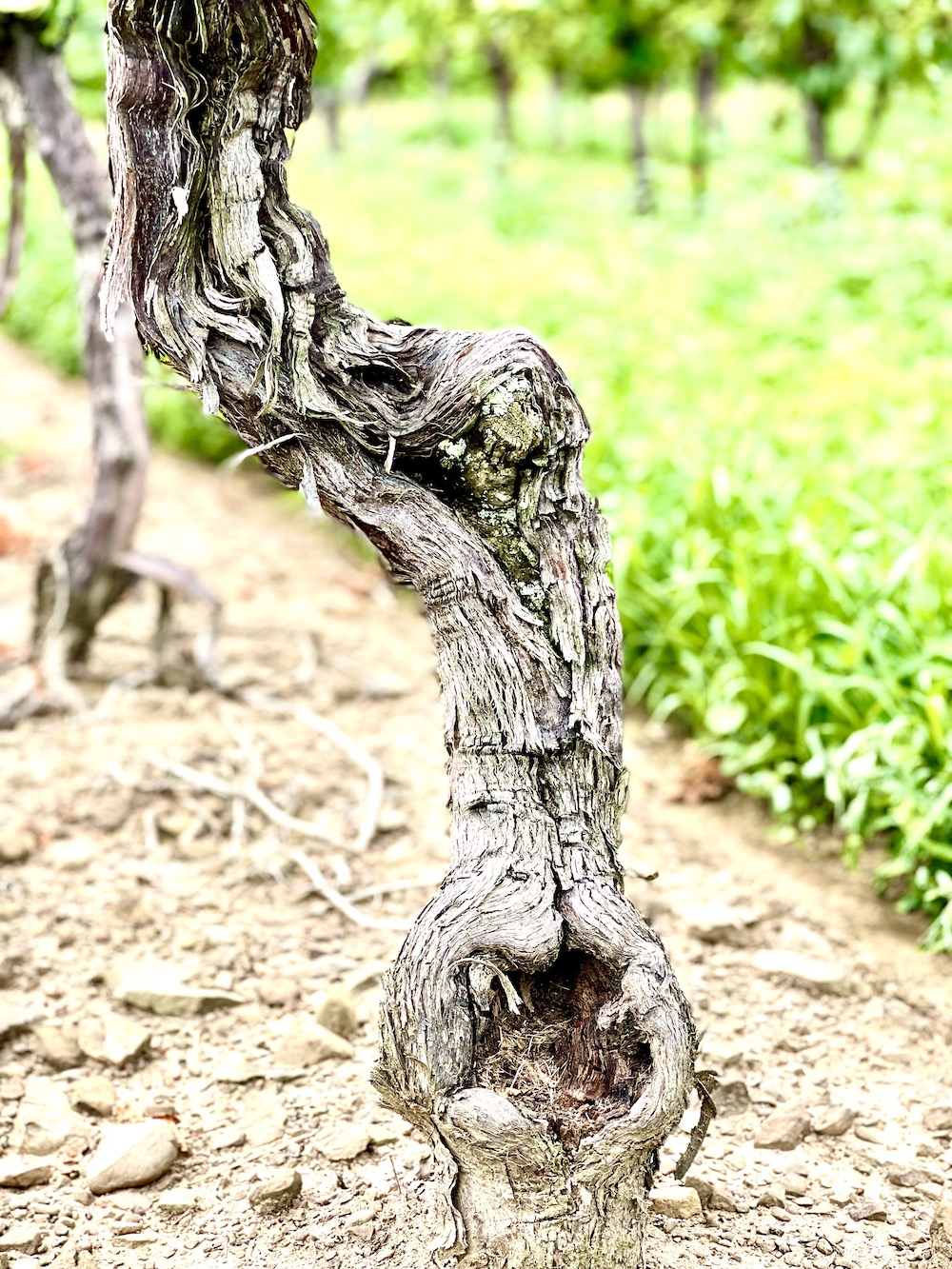
Look close enough and you will find bird nests (above photo) among the mass of knotty wood, roots protruding wildly from the rocky soil and an abundance of cuts and bruises from a life well lived. This is Montague Vineyard, a Niagara treasure, and a huge part of where Niagara has come from and, perhaps more importantly, where it is going.
Fifty acres of the Montague Vineyard, or “Monty” as it is affectionately known, was purchased by Inniskillin Estate Winery from grape-growing pioneer Stan Murdza in 1982, with a further 50 acres acquired in 1991. The land had been used as an experimental vineyard, with Chardonnay, Merlot, Pinot Noir and Riesling under vine at the time, as the Murdza family learned how to manage vinifera varieties, which were at that point, relatively new to the region.
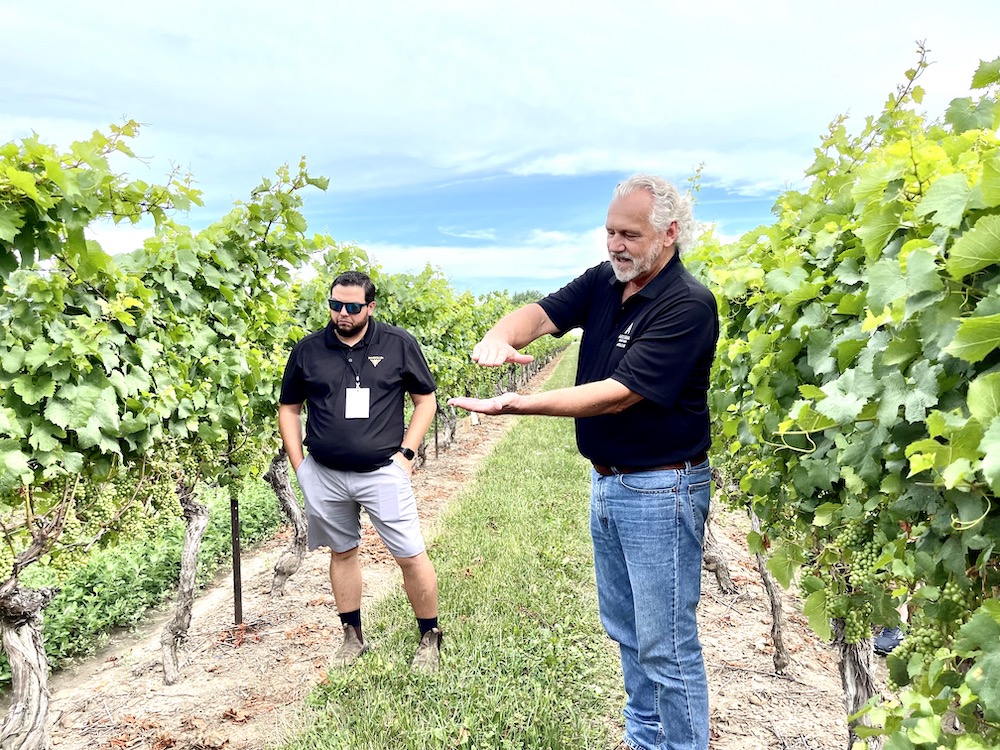
Murdza and his wife Doreen bought their first vineyard in Niagara 1970 and the family was one of a handful of grape growers who were early adopters of vinifera vines in Canada and began planting noble grapes in the 1970s. Their pioneering spirit predates the founding of Donald Ziraldo and Karl Kaiser’s Inniskillin Estate Winery in 1975, and the granting of the first winery license since 1929. It was the beginning of the modern wine industry in Ontario. Stan Murdza’s passion for viticulture is also found in his daughter, Dr. Debra Inglis, who is currently the Director of Brock University’s Cool Climate Oenology and Viticulture Institute. Since this article was posted, Inglis reached out to fill in some of the gaps in the history behind her family’s contributions to Niagara wine industry and Montague Vineyard (see bottom of the post).
At the time of the sale, Ziraldo tells Wines In Niagara, he had to convince 14 shareholders to go in on the deal as Inniskillin wasn’t exactly flush with cash. He invited a select group of investors to a meeting in Toronto and told them that as investors in the vineyard they could come out each harvest, pick grapes and receive a case of white and red wine every vintage as their dividend. “They just threw their money in right there,” says Ziraldo with a chuckle. Once Inniskillin became part of Vincor and the company went public, all the shares were bought back from the original shareholders and the vineyard was solely owned by Vincor (subsequently, Constellation Brands and now Arterra Wines Canada). The name Montague honours George Montague, who was one of the early investors at at that initial meeting along with John Tory Sr. Ziraldo met Montague while serving on the Shaw Festival Theatre’s board of governors.
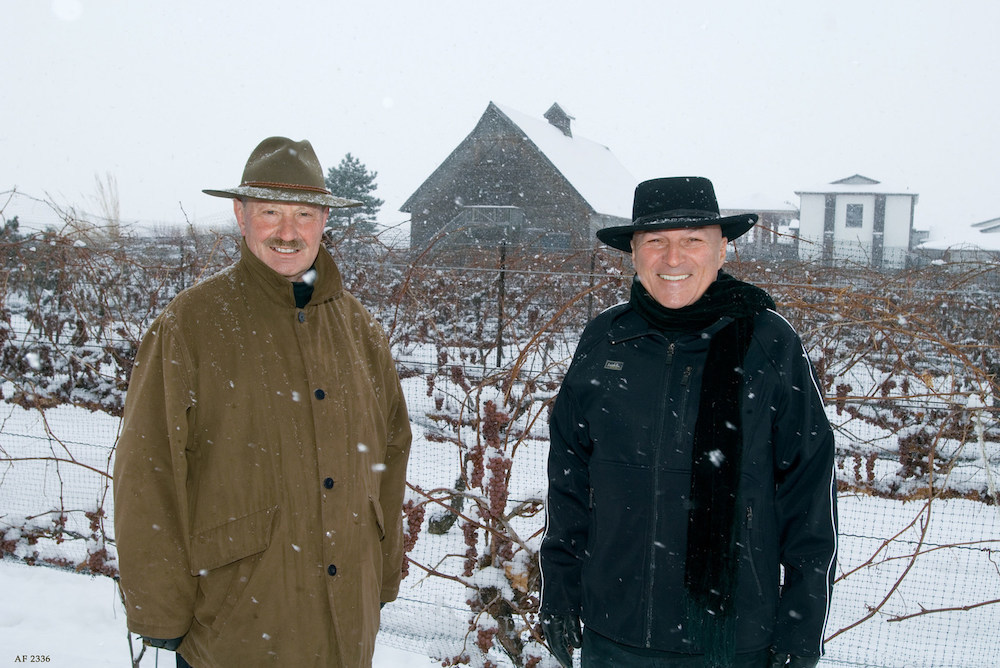
Ziraldo and Kaiser began planting vinifera vines as soon as they purchased the first parcel in 1982, choosing clones and varieties that thrive in the clay loam pockets on top of the Queenston Formation (bedrock that forms a significant piece of Ontario) and exposed to intensely dry summer heat. That heat, along with the rapid cooling which takes place at night, produces extremely ripe and tropical-fruit Chardonnays with structure and plenty of aromatics.
Chardonnay, of course, is not the only variety grown in the Montague Vineyard, it’s not even the only single-vineyard bottling, but it is the most well-known expression of the vineyard and the grape we think of when the term “grand cru” or “elite” vineyard is whispered in wine insider circles (my thoughts on grand cru Niagara vineyards here. Even though it is a monopole, that does not take away from the fact that the Montague Vineyard Chardonnay bottlings since the very beginning have been consistently among the best expressions — with a unique, riper, fleshier profile than that of the Bench wineries — of this grape in Niagara.
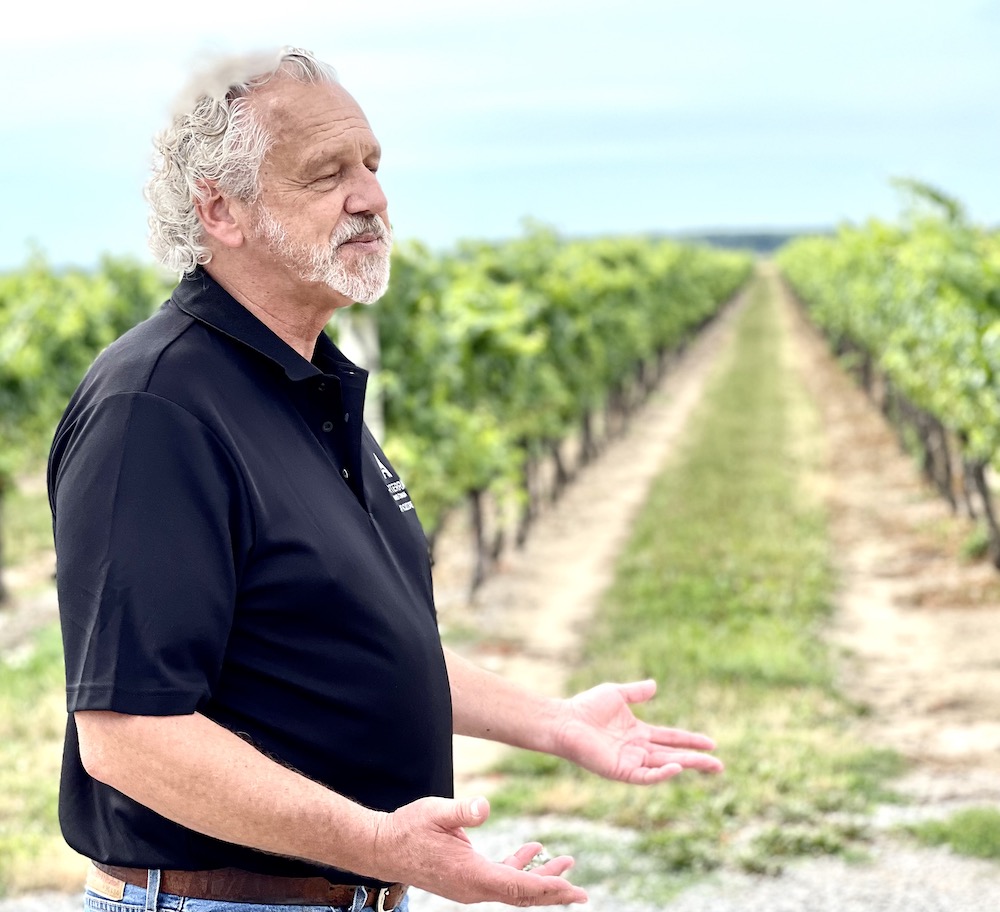
“I’ve been walking these vineyards for a very long time,” says Gerald Klose, Inniskillin’s director of viticulture. He has been tending the vineyard here since the early 1980s, replanting what were once corn and soya beans with mostly Chardonnay and Pinot with a bit of Merlot, Pinot Gris, Riesling, and Sauvignon Blanc. “They all fit very well here,” he says as we walk the vineyard, first in the 1990 block and later the original block of Chardonnay from 1979.
Only 2.5 acres of the original Chardonnay planting remains productive in the vineyard and the grizzled, low-yielding vines are now interspersed between newer plantings. No one is certain of the original clone.
The vineyard itself, located at 677 Carlton St. in Niagara-on-the-Lake in the Four Mile Creek sub-appellation, is unremarkable, aside from the myriad ancient vines in the oldest block. There are no dramatic slopes or landmarks to speak of unless you consider the proximity to the airport a landmark. It’s located equidistance from Lake Ontario and the Escarpment and is among the warmest points in Niagara. Montague’s heavy clay soil is not irrigated, forcing the roots of the decades-old vines to dig down deep.
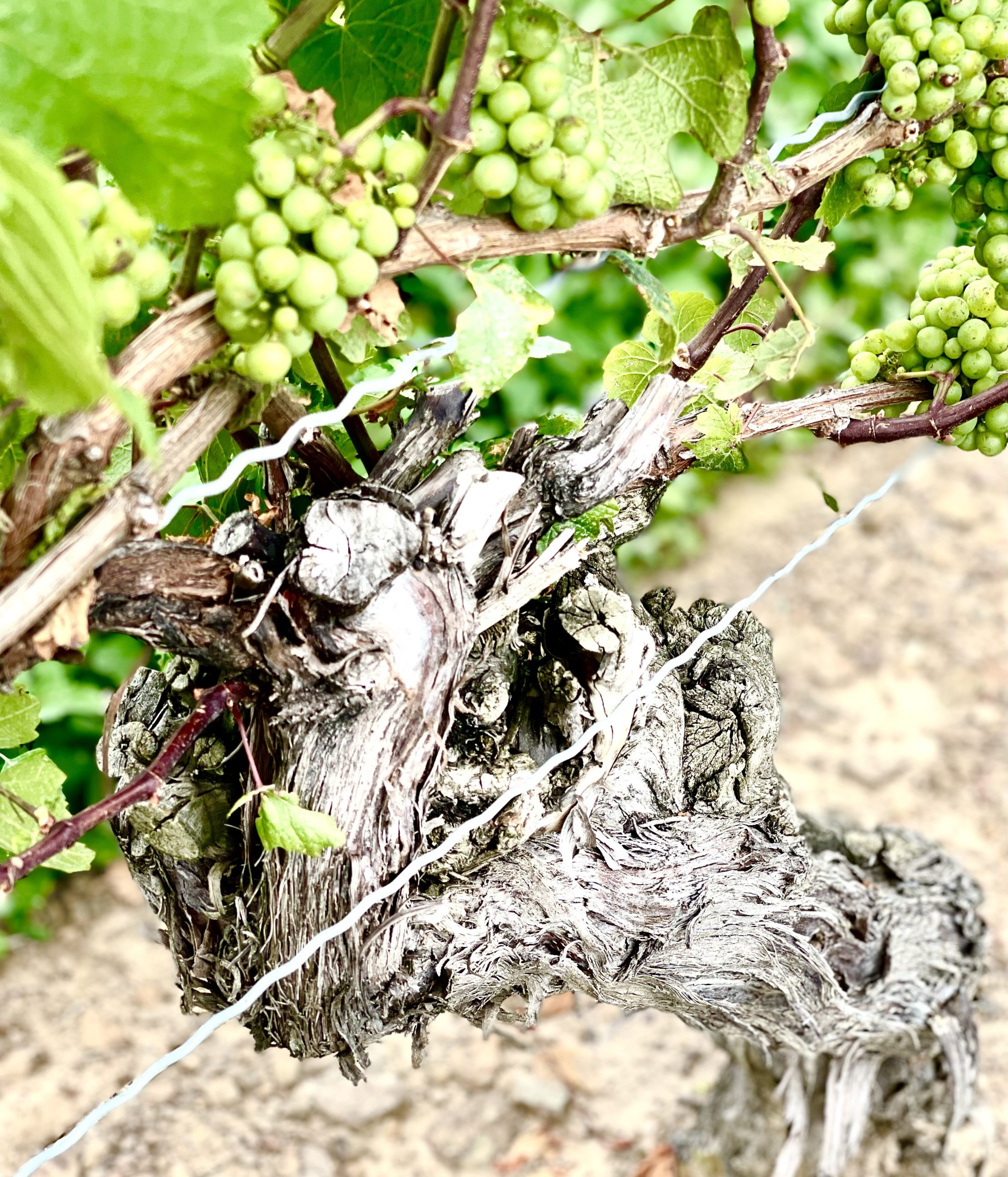
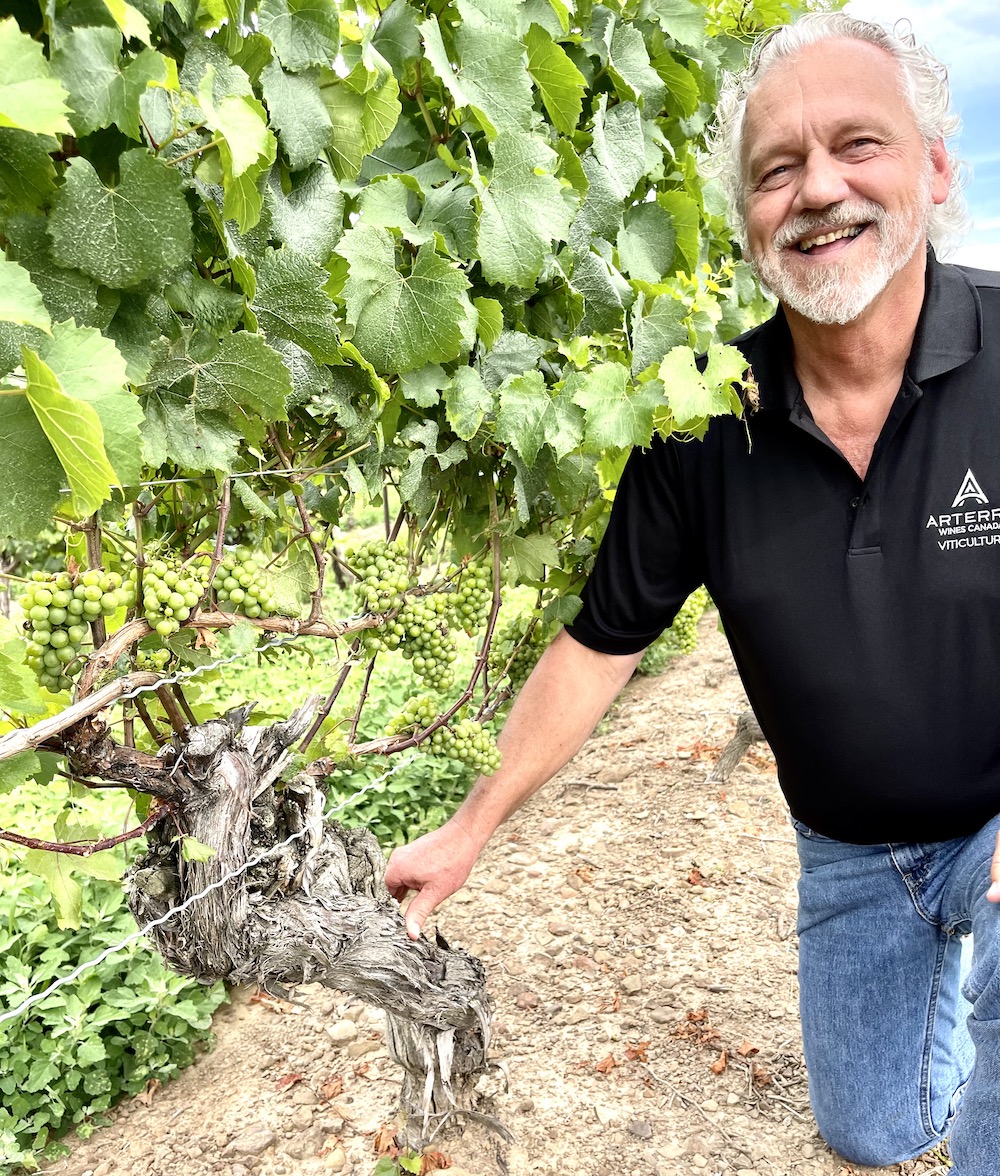
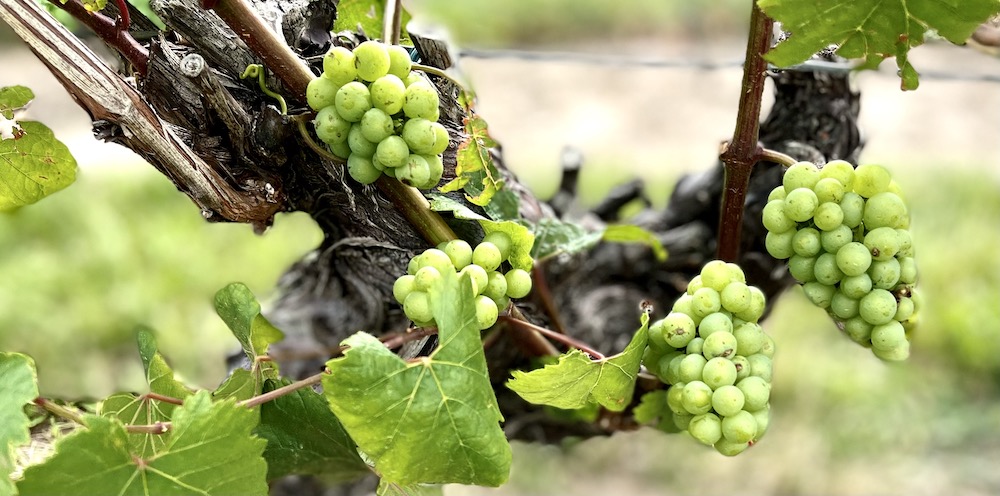
As Ziraldo tells it, the vineyard was chosen by Inniskillin in those early days primarily because “it was close to the airport.” But that turned out to be one of the early concerns due to the flooding that occurred from the airport runoff during heavy storms. Ziraldo gives all the credit for the success of the Montague Vineyard to Klose. He is the one who put in all the hard work building up the vineyard and installing drainage. He is the one who chose the right mix of clones to suit the vineyard. He is the one who recognized that grass and clover cover crops, planted in every other row, was a way to retain the moisture during dry periods.
Twenty percent of the vineyard is dedicated to Chardonnay production (clones 95 and 96) and just over two acres are the oldest on the property, planted in 1979. Many of those “vieilles vignes” are still in production to this day and always used for the estate’s single-vineyard wine. Specifically, the vineyard’s rootstock is selection Oppenheim 4; better known as SO4 which is quite vigorous and performs well in heavy soil (clay). It is especially ideal for varieties like Chardonnay and Pinot Noir which are sensitive during flowering.
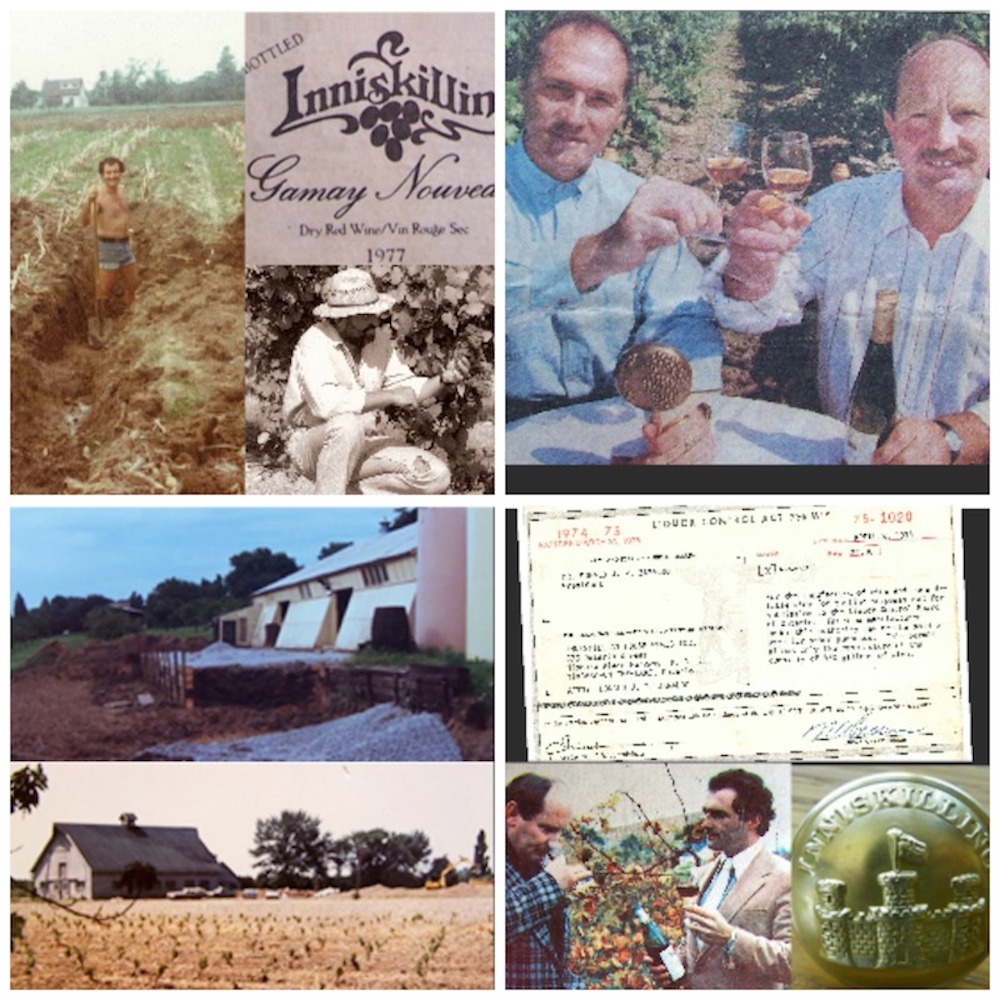 The vineyard is unique as it enjoys one of the warmest microclimates in the Niagara Peninsula. The topography is relatively flat, which leads to an abundance of sun exposure. As the land warms in the sunlight, the hot air rises, drawing in cooler air from above Lake Ontario to take its place. This creates constant movement of air which extends the ripening process and wards off frosts in early spring and late autumn. Long hot, dry summers in this microclimate ensure the grapes ripen fully, delivering annual harvests that rarely disappoint.
The vineyard is unique as it enjoys one of the warmest microclimates in the Niagara Peninsula. The topography is relatively flat, which leads to an abundance of sun exposure. As the land warms in the sunlight, the hot air rises, drawing in cooler air from above Lake Ontario to take its place. This creates constant movement of air which extends the ripening process and wards off frosts in early spring and late autumn. Long hot, dry summers in this microclimate ensure the grapes ripen fully, delivering annual harvests that rarely disappoint.
Extended ripening supports the development of deep colours, balanced natural acidity, and aromatics reminiscent of those in Burgundy. If growing conditions are too warm Pinot Noir can lose its fresh fruit and floral flavours and taste unattractively cooked. Montague’s climate prevents this from occurring. This moderating effect is less pronounced in the southern part of the region, where specialized fans are used to circulate air and protect against frosts when temperatures drop below -2 C. Fans were installed in 2006. Days are warm, with lots of sunlight, and nights are very cool during the growing season — a viticulturist’s dream.
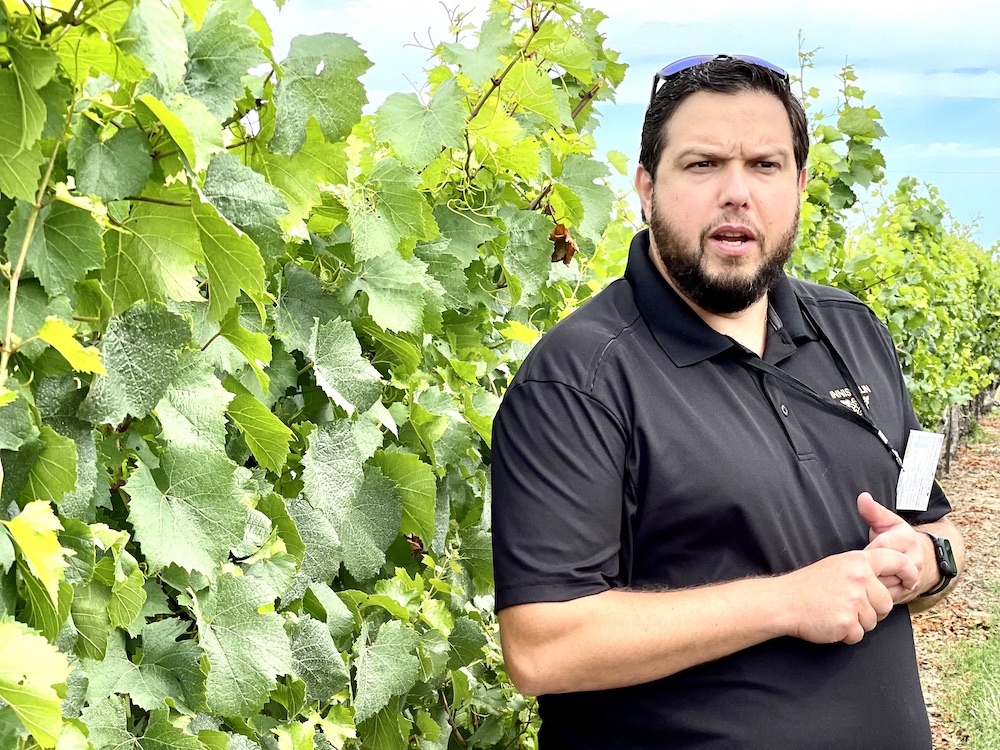
The vineyard’s terroir is characterized by heavy clay soils (a clay loam mixture) and bedrock that is covered with glacial deposits of various compositions and textures. It is almost evenly divided: Jeddo clay to the south and Chinguacousy clay to the north. These soils tend to stay cool and retain moisture well into the late spring. This high-water holding capacity ensures that the vines enjoy a constant supply of nutrients and moisture during the drier weather typical for July and August. As a result, the grapevines generally have higher concentrations of sugars and aromas. Tile drainage is required in each row to help remove excess water from the soil below its surface. Excess water may smother the vine’s roots, impair photosynthesis, and delay ripening.
The combination of all the above has provided a perfect blueprint for success since the first wines were made by Karl Kaiser and Donald Ziraldo all those years ago.
“It has rarely let us down,” says Klose. “Karl loved the fruit, Bruce (Nicholson) loved the fruit and now Nick (Nicholas Gizuk) loves the fruit.”
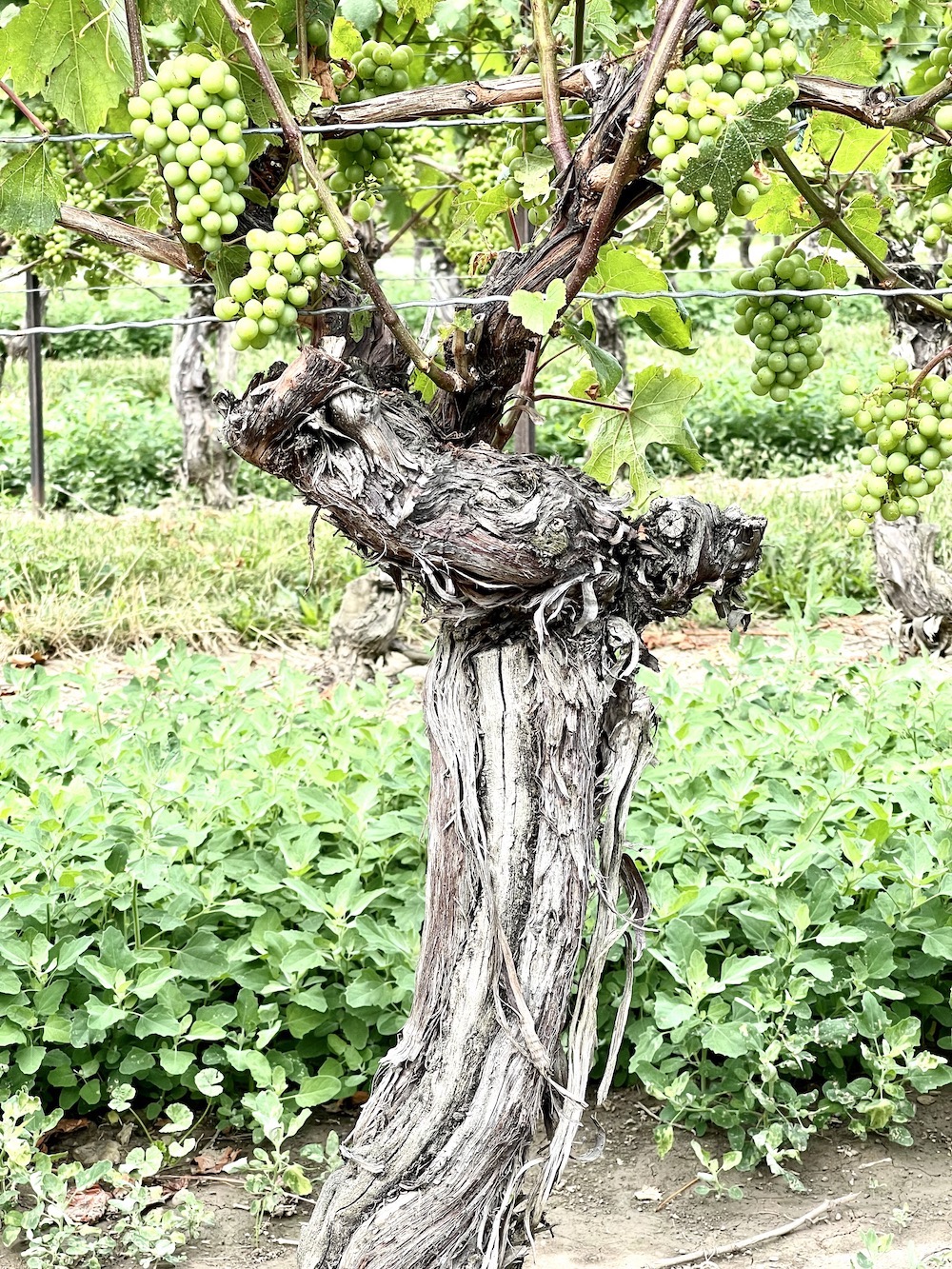
It is incredible to me that since the very beginning of the Montague Vineyard only three winemakers have made the single-vineyard expression wines originating there — Kaiser, of course, then the recently retired Nicholson, who first mentored under Kaiser and now Gizuk, who learned under Nicholson. Gizuk seems poised to follow exactly in the footsteps of his mentors.
“There is a fleshy character and always beautiful peach notes,” Gizuk says as we explored a vertical of wines paired with food from Smoke and Barrel Niagara. “The vines are used to wetter weather, they are used to (both cold and hot) temperatures,” he says. “I hope they keep producing grapes for another 40 years.”
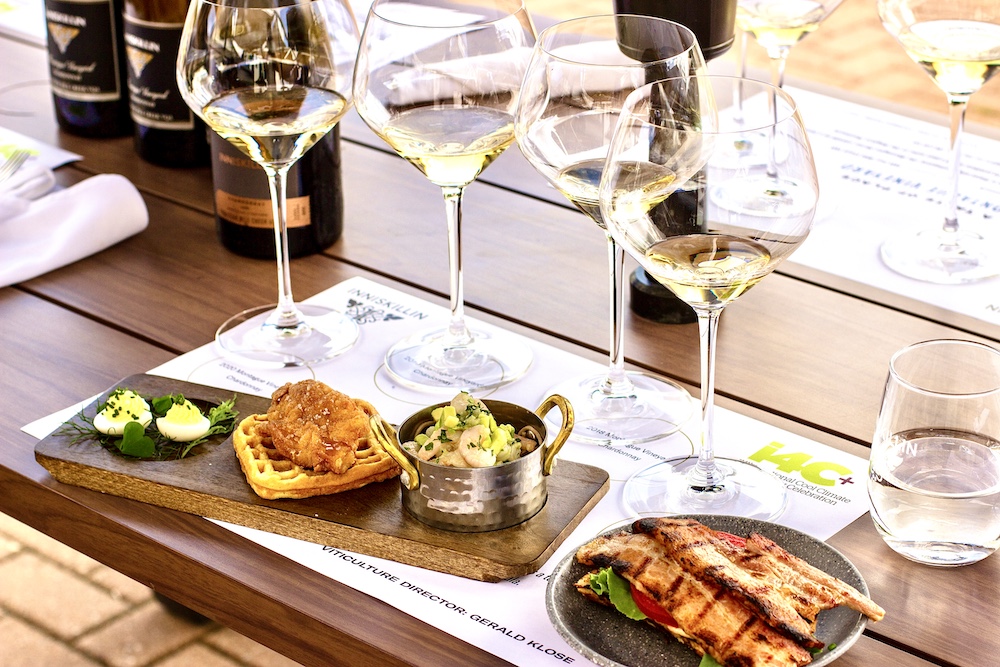
The vineyard tour, held in conjunction with the recent i4C events, with Klose and Gizuk concluded with a curated selection of site-specific releases from the 2020, 2019, 2018, and 2017 vintages (all made by Nicholson), each paired with brunch bites prepared by Chef Timothy Mackiddie of Smoke and Barrel Niagara. Here’s what I liked:
Note: The current price for the Montague Vineyard Chardonnay is $26 at Vintages stores or the winery. I challenge you to find a better single-vineyard Chardonnay at that price anywhere in Niagara.
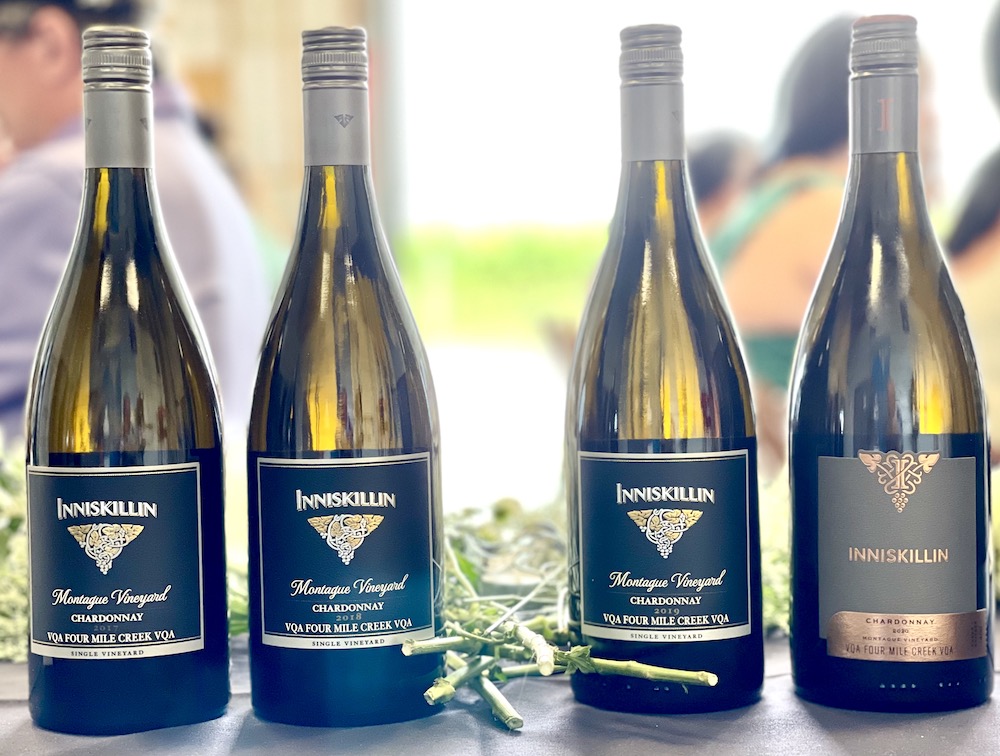
Inniskillin Montague Vineyard Chardonnay 2017 — This was paired with Deviled Quails Eggs. The nose on this nicely mature Chardonnay showed peach cobbler, golden apple, baked pear, and voluptuous spice notes. It’s fleshy, ripe with textured on the palate with baked pear, peach, and apple to go with butterscotch, toasted vanilla bean and oak spices with a still vibrant finish. I thought the truffle oil and cilantro in the quail egg dish was a decadent and daring pairing.
Inniskillin Montague Vineyard Chardonnay 2018 — This was paired with Chicken and Waffles. 2018 was a bit challenging for Chardonnay and this version of Montague showed a bit less of the fleshy, ripe component of the vineyard and a bit more of the oak spices. The texture was on point on the palate, but the fruit was a bit short. What did shine through was the pairing — the brown butter and barrel spice marinade infused with maple syrup was a perfect match for the Chardonnay. The star pairing of the tastings.
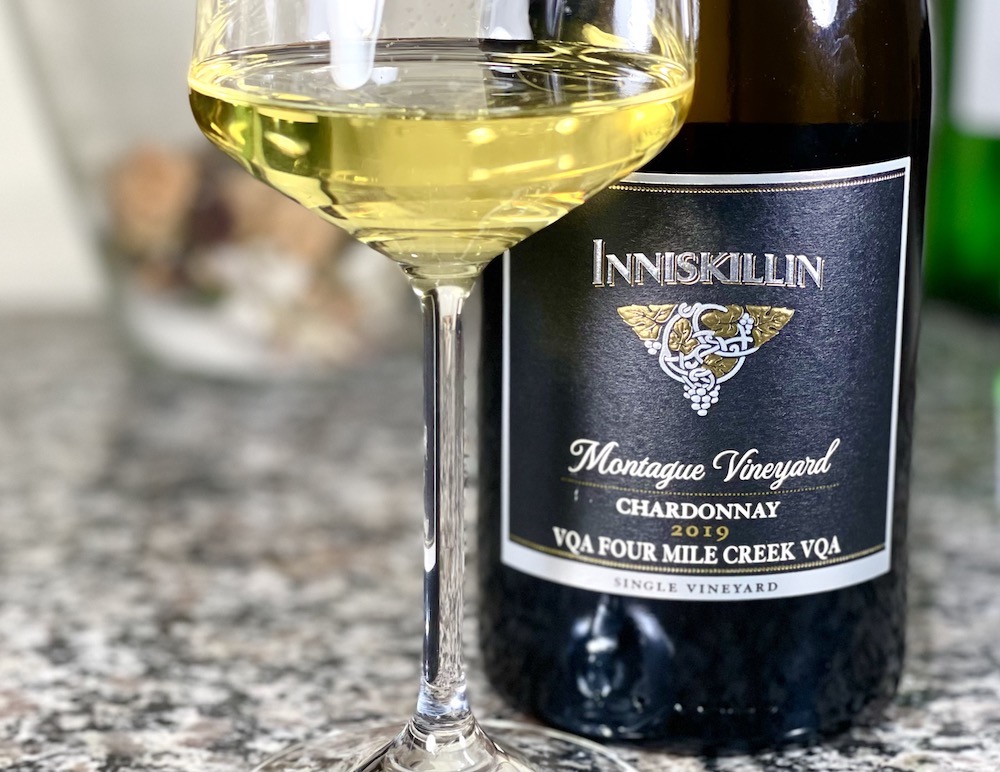
Inniskillin Montague Vineyard Chardonnay 2019 (93 points) — This was paired with a Shrimp and Soba Salad. A portion of the grapes were whole bunch pressed while the remaining were gently crushed and pressed. Allowed to cold settle overnight the juice was transferred to new and older French oak barrels where it fermented for 11 days until dryness. The wine then went through a complete malo-lactic fermentation and was allowed to age for 8 months before racking to a stainless-steel tank. This is a terrific wine at a great price with such a generous nose of creamy pear, lemon sorbet, golden apple, flinty minerality, toasted vanilla and almonds with nutmeg spices. It is rich and ripe on the palate with smoky/flinty notes, ripe apple, lemon, poached pear, a creamy texture, elegant spices, and a long, vibrant finish. The opposite of the 2017 Chardonnay, this was classic “Monty” with all that fleshy goodness, creamy feel, and finesse, which was amplified in this creative dish of North Atlantic shrimp, cucumber, avocado and buckwheat soba noodles.
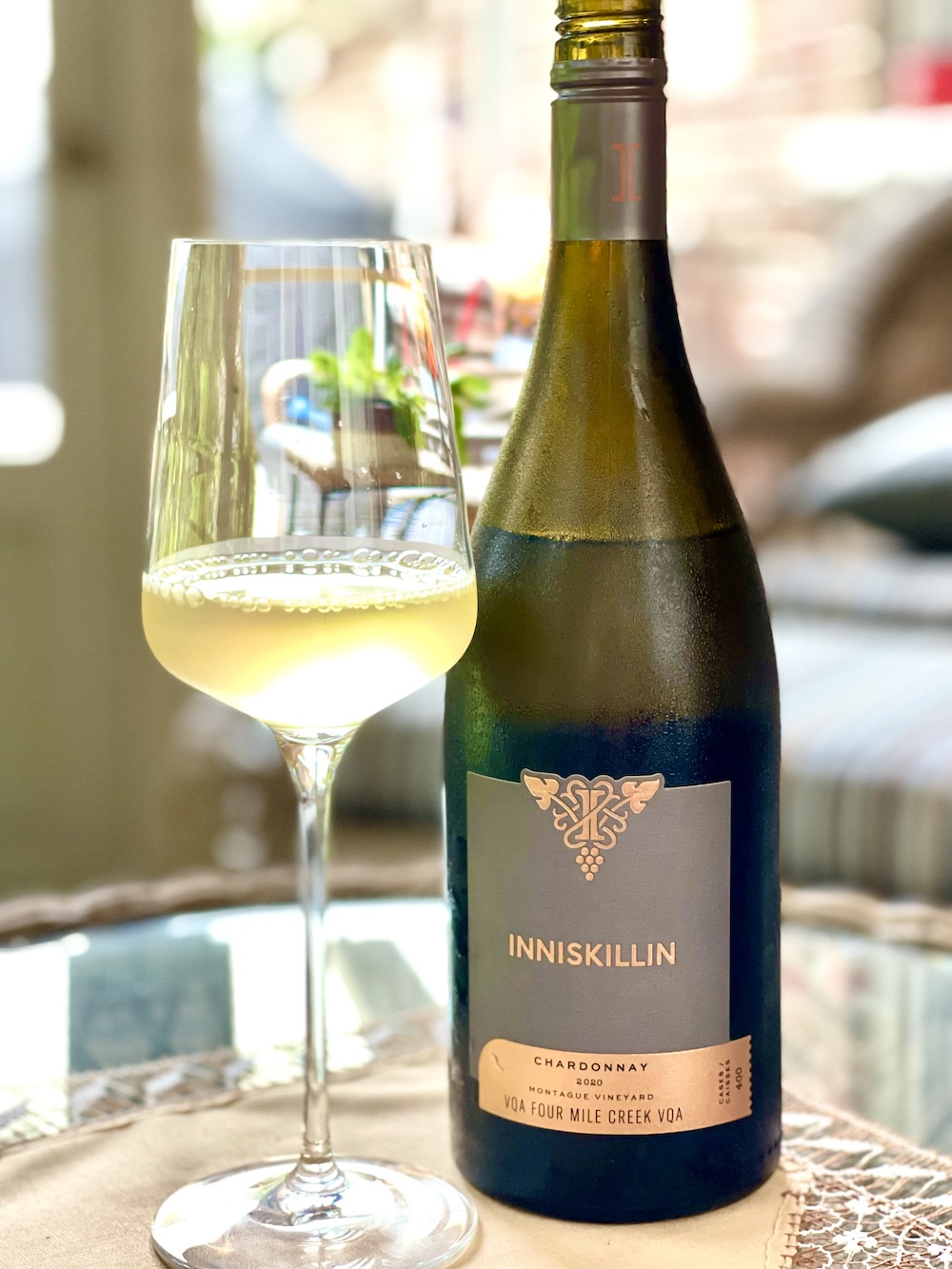
Inniskillin Montague Vineyard Chardonnay 2020 (94 points) — Paired with Pork Belly BLT. Montague shines in the heat of a great vintage like 2020. The aromas jump from the glass with peach tart, baked apple pie, poached pear, roasted vanilla bean, toasted almonds, and an array of baking spices. It has a creamy texture on the palate and a lush and fleshy profile loaded with ripe orchard fruits, lemon oil, more restrained oak spice notes and still plenty of bright acidity keeping it fresh and lively through a long finish. Buy a bunch, but don’t keep it too long … it’s too good right now to wait on it. The pork belly was salted, slowly cured and served with Chardonnay mayo. A nice complementing dish that stood up to the big Chardo from 2020.
The Murdza family connection from Debra Inglis
By Debra Inglis
The original vineyard my dad had was in St. Davids. He bought it in 1970 and it was a 10-acre vineyard of Concord and Niagara on line 8, right across from where Coyote’s Run is. So, not wine grapes back then, they were used for juice and basket grapes. There is another winery in that location there now.
In 1970, my dad (Stan) was the grape procurement officer for Powel Foods, and he did up the contracts for the local grape growers for processing their fruit at Powel Foods. He felt he should have a farm to better understand the needs of the growers. Then in 1975, he left Powel Foods completely and bought the 50-acre Carlton Street farm, as we called it, aka the Montague Vineyard. Then we started with planting vinifera grapes on that farm. My dad bought another 20-acre farm in 1981 and we moved out to the farm full time at that point. He also planted that farm to vinifera (that was the farm on Line 4 that I took over after he passed away and was awarded Grape King in 2010. Some of the Chardonnay and Riesling planted in 1981 are still in production on the farm today).
He also bought another 55-acre farm on Line 8, across the street from that original 10-acre vineyard, and we planted that to mainly vinifera. When my dad passed away, my brother Steve inherited that 55-acre farm and eventually went into partnership with another family to start Coyote’s Run Estate Winery. Steve brought Dave Sheppard over from Inniskillin to be the winemaker at Coyote’s Run. But that winery was sold a few years ago now.


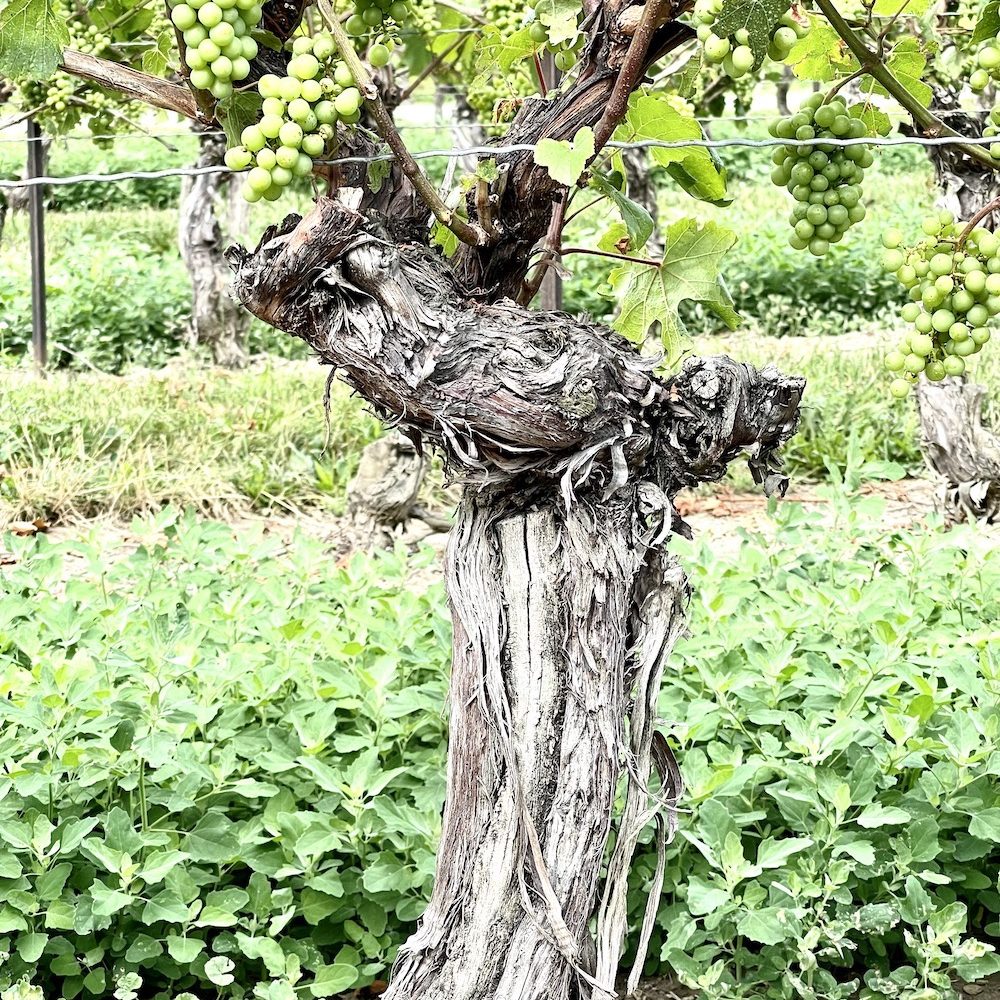



Which one was Nick pouring at Chardonnay in the City? It was delicious!